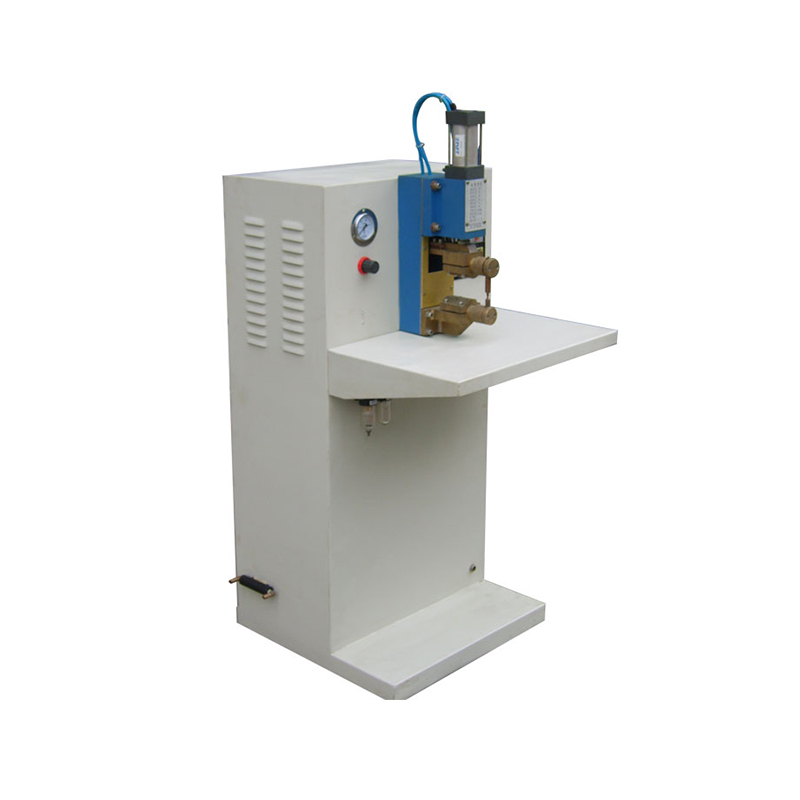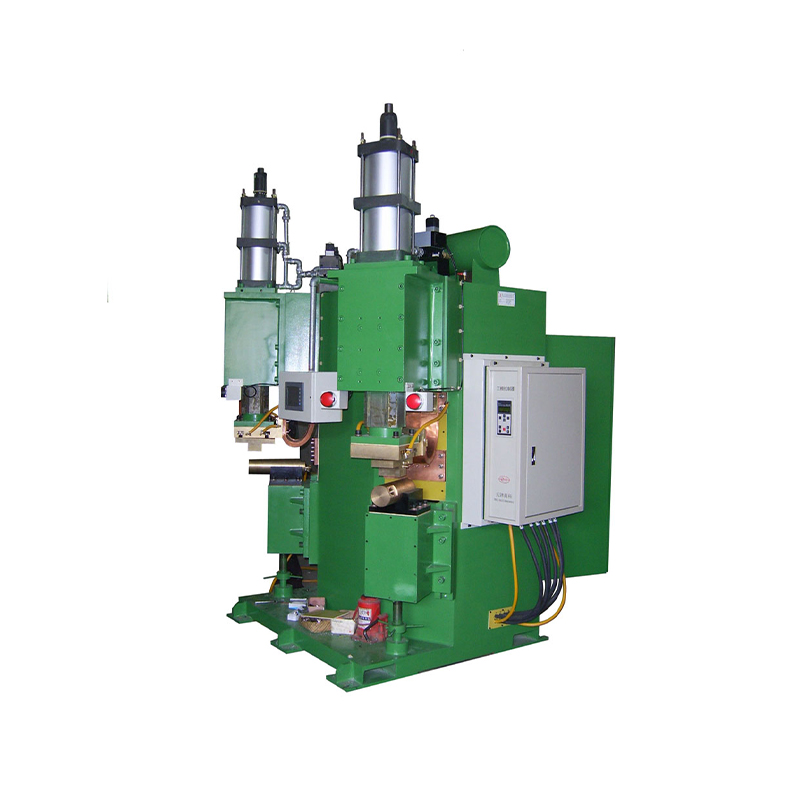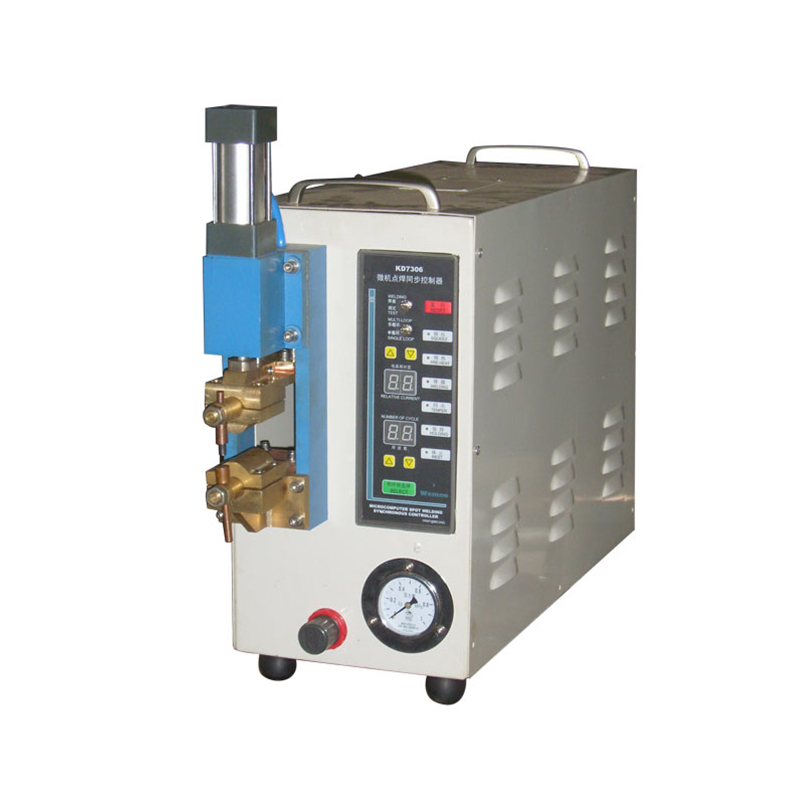Why is the three-phase secondary rectifier double-head welding machine particularly suitable for high-intensity welding operations?
Release Time : 2025-07-16
In modern industrial production, welding technology is one of the important processes for connecting metal materials. With the development of manufacturing processes and the improvement of welding quality requirements, traditional welding equipment has been unable to meet the complex and changing work requirements. The three-phase secondary rectifier double-head welding machine, with its unique design and technical advantages, has demonstrated excellent performance and wide applicability in high-intensity welding operations.
1. Stable power supply
The three-phase secondary rectifier double-head welding machine uses three-phase AC power input and converts it into DC output through an efficient rectifier circuit. Compared with the single-phase power supply system, the three-phase power supply has higher stability and more balanced load distribution, which enables the welder to maintain stable output power even under long-term continuous working conditions. For high-intensity welding operations, this stability is crucial because it directly affects the welding quality and work efficiency. Especially when dealing with large structural parts or thick plates, continuous and stable current supply can ensure consistent penetration and avoid welding defects such as lack of fusion or porosity.
2. High efficiency and low energy consumption
Three-phase secondary rectifier technology not only improves the utilization rate of electric energy, but also reduces energy consumption. Due to the use of advanced rectifiers, this type of welding machine can achieve energy conversion efficiency close to 100%, which means that almost all input energy is effectively used in the welding process, rather than converted into heat loss or other forms of energy waste. For projects that require a lot of welding work, this not only saves operating costs, but also helps reduce carbon emissions, which is in line with the current concept of green environmental protection. In addition, high efficiency also means that the welding machine can complete more welding tasks in a shorter time, thereby improving overall productivity.
3. Precise control and adjustment capabilities
In order to meet the welding needs of workpieces of different materials, thicknesses and shapes, the three-phase secondary rectifier double-head welding machine is equipped with a variety of parameter setting options, allowing users to adjust key parameters such as welding current, voltage and welding speed according to actual conditions. These fine adjustment functions enable the welding machine to cope with various welding challenges from thin plates to thick plates, whether it is aluminum alloy or stainless steel, it can achieve ideal welding results. At the same time, the advanced control system can also provide real-time monitoring and feedback to help operators promptly discover and correct possible problems, further ensuring the consistency and reliability of welding quality.
4. Advantages of double-head design
Unlike traditional single-head welding machines, three-phase secondary rectifier double-head welding machine has two independently working welding heads, which gives it an unparalleled advantage in certain specific application scenarios. For example, when performing symmetrical welding or processing multiple joints at the same time, the double-head design can significantly shorten the welding cycle and improve work efficiency. Especially in industries such as building steel structures and shipbuilding, it is often necessary to weld multiple positions at the same time to speed up the construction progress. At this time, the double-head welding machine becomes an ideal choice. Moreover, each welding head can set parameters independently, which is convenient for precise operation according to the specific requirements of different parts.
5. Suitable for harsh environments
High-intensity welding operations are often accompanied by more harsh working conditions, such as high temperature, humidity, dust, etc. Three-phase secondary rectifier double-head welding machine is usually specially designed and protected to enable it to operate normally in harsh environments. For example, the outer shell of some models of welding machines is made of materials with a high waterproof and dustproof grade, and the internal circuit is equipped with a variety of safety measures such as overload protection and short-circuit protection to ensure that the equipment can work stably and reliably even under extreme conditions. This is especially important for special places such as field construction sites or offshore platforms.
6. Promote automation integration
With the popularization of the concept of intelligent manufacturing, more and more companies are beginning to explore incorporating welding processes into automated production lines. Due to its good compatibility and open interface, the three-phase secondary rectifier double-head welding machine can be easily combined with other automated equipment (such as robots) to form a complete set of automatic welding solutions. This integration method can not only greatly reduce labor costs, but also significantly improve welding accuracy and consistency, meeting the increasingly stringent requirements of high-end manufacturing for product quality.
In summary, the reason why the three-phase secondary rectifier double-head welding machine is particularly suitable for high-intensity welding operations is mainly because it can provide strong power support while taking into account energy conservation, operational flexibility, environmental adaptability, and intelligent integration.
1. Stable power supply
The three-phase secondary rectifier double-head welding machine uses three-phase AC power input and converts it into DC output through an efficient rectifier circuit. Compared with the single-phase power supply system, the three-phase power supply has higher stability and more balanced load distribution, which enables the welder to maintain stable output power even under long-term continuous working conditions. For high-intensity welding operations, this stability is crucial because it directly affects the welding quality and work efficiency. Especially when dealing with large structural parts or thick plates, continuous and stable current supply can ensure consistent penetration and avoid welding defects such as lack of fusion or porosity.
2. High efficiency and low energy consumption
Three-phase secondary rectifier technology not only improves the utilization rate of electric energy, but also reduces energy consumption. Due to the use of advanced rectifiers, this type of welding machine can achieve energy conversion efficiency close to 100%, which means that almost all input energy is effectively used in the welding process, rather than converted into heat loss or other forms of energy waste. For projects that require a lot of welding work, this not only saves operating costs, but also helps reduce carbon emissions, which is in line with the current concept of green environmental protection. In addition, high efficiency also means that the welding machine can complete more welding tasks in a shorter time, thereby improving overall productivity.
3. Precise control and adjustment capabilities
In order to meet the welding needs of workpieces of different materials, thicknesses and shapes, the three-phase secondary rectifier double-head welding machine is equipped with a variety of parameter setting options, allowing users to adjust key parameters such as welding current, voltage and welding speed according to actual conditions. These fine adjustment functions enable the welding machine to cope with various welding challenges from thin plates to thick plates, whether it is aluminum alloy or stainless steel, it can achieve ideal welding results. At the same time, the advanced control system can also provide real-time monitoring and feedback to help operators promptly discover and correct possible problems, further ensuring the consistency and reliability of welding quality.
4. Advantages of double-head design
Unlike traditional single-head welding machines, three-phase secondary rectifier double-head welding machine has two independently working welding heads, which gives it an unparalleled advantage in certain specific application scenarios. For example, when performing symmetrical welding or processing multiple joints at the same time, the double-head design can significantly shorten the welding cycle and improve work efficiency. Especially in industries such as building steel structures and shipbuilding, it is often necessary to weld multiple positions at the same time to speed up the construction progress. At this time, the double-head welding machine becomes an ideal choice. Moreover, each welding head can set parameters independently, which is convenient for precise operation according to the specific requirements of different parts.
5. Suitable for harsh environments
High-intensity welding operations are often accompanied by more harsh working conditions, such as high temperature, humidity, dust, etc. Three-phase secondary rectifier double-head welding machine is usually specially designed and protected to enable it to operate normally in harsh environments. For example, the outer shell of some models of welding machines is made of materials with a high waterproof and dustproof grade, and the internal circuit is equipped with a variety of safety measures such as overload protection and short-circuit protection to ensure that the equipment can work stably and reliably even under extreme conditions. This is especially important for special places such as field construction sites or offshore platforms.
6. Promote automation integration
With the popularization of the concept of intelligent manufacturing, more and more companies are beginning to explore incorporating welding processes into automated production lines. Due to its good compatibility and open interface, the three-phase secondary rectifier double-head welding machine can be easily combined with other automated equipment (such as robots) to form a complete set of automatic welding solutions. This integration method can not only greatly reduce labor costs, but also significantly improve welding accuracy and consistency, meeting the increasingly stringent requirements of high-end manufacturing for product quality.
In summary, the reason why the three-phase secondary rectifier double-head welding machine is particularly suitable for high-intensity welding operations is mainly because it can provide strong power support while taking into account energy conservation, operational flexibility, environmental adaptability, and intelligent integration.







